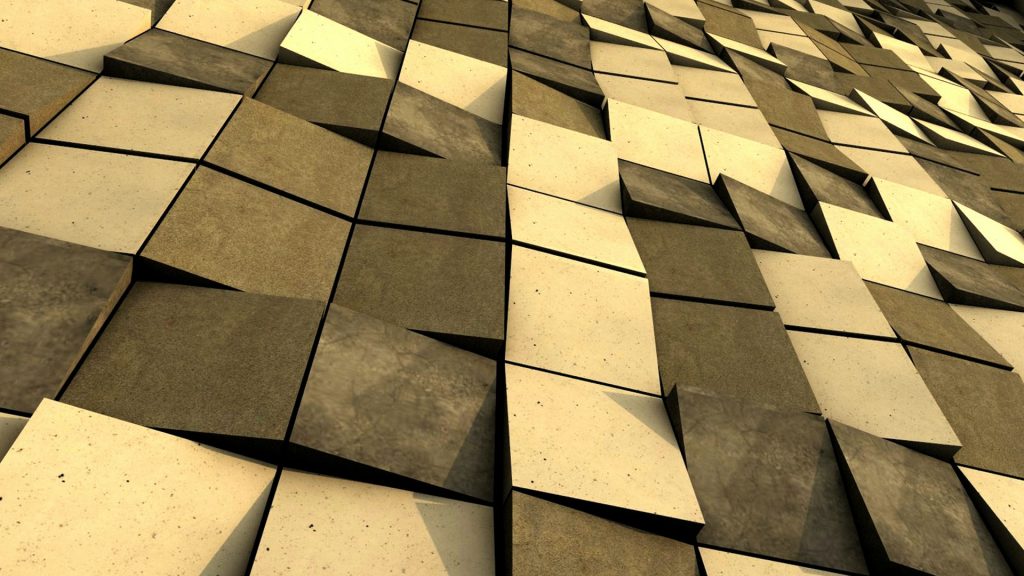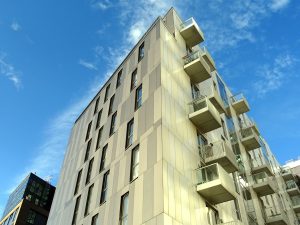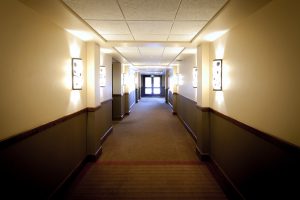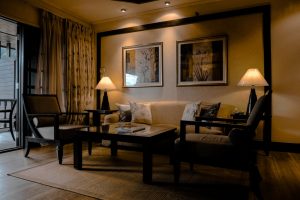
The approach to building facades these days is changing. In addition to developments in their waterproofing, aesthetic functions, and insulation, they are now encompassing energy efficiency which brings an extra layer of complexity to the process. As the number of developments in technology and materials grow, this allows the façade engineers to do more with the exterior design of buildings. When we talk about façade design trends, it is not about what is looking hot right now but more about the design approach, and how it has changed.
The design approach
Quite often when people think of facades they think of the most breathtaking examples of Architectural cladding that is in the world, such as the Parthenon, St Peter’s Basilica or some of the amazing works by the great Frank Gehry. Façade design can leave an impression and become an integral part of the cityscapes, lasting centuries which is often how buildings become iconic.

Materials
The developments that have occured in technology allow for materials to be produced in bulk, and make them easier to manipulate for certain applications. Producing so many perforated metal sheets, such as aluminium battens for example, is less time consuming and simpler than it was in the era before us.
The perforated, expanded or the woven mesh are popular these days used in facades for either building skin or as texture and shading elements. This type of facade is used in more complex designs as they will fit perfectly when it comes to functionality. Façade designs need to strike a balance of restricting glare from the sun coming in but also allowing in as much natural light as possible.
A good way to achieve this is to use open screens and profiles that are oriented in a certain way that allows a passage for natural light to filter through, that still offers you optimal protection from sunlight.
Traditionally different façade engineers will opt for glass that can provide light to areas, but in Australia, the glare that comes from the sun can be too strong and cause vision problems.
Sustainability
Another key factor when it comes to façade design is sustainability, a trend that is more essential now than it ever has been. Sustainability is about reducing the footprint by reducing the long term costs, optimising the layout and design and by using smarter materials.
Sustainability can be addressed by the facades being oriented to respond to solar movement. It will depend on the climate, but the facades can prevent any heat loss and keep the cooler temperature at a stable level inside the building. This reduces the amount of energy that building managers need to be using in order to keep the environment comfortable for those that are using the space.
Another façade design trend that is increasing in popularity is the vegetated facade. This is where a façade is built to help support the growth of vegetation. The vegetation will become part of the skin of the building, which will reinforce biodiversity and offer amenity spaces for the building inhabitants, as well as offering shade.
A final example of a new building façade design trend comes from the material technologists Decker Yeadon. The Homeostatic Facade System he developed compromises two sheets of glass that are a newly developed material. The material was created to help support the building like a muscle, and it will contract and expand based on the temperature of the outside surface. This in turn will alter the amount of heat and light that can enter the building.












